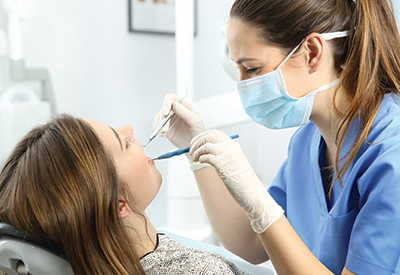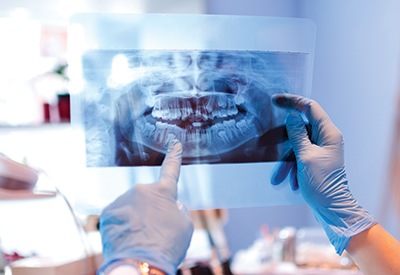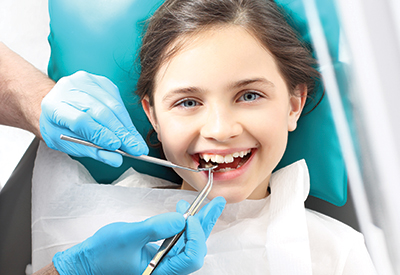
İstanbul Galata Üniversitesi Diş Hekimliği Fakültesi Hastanesi
Orthodontics

It is a branch of dentistry that undertakes the diagnosis, treatment and prevention of crowded teeth, deviations in the jaws and facial irregularities. Our main goals are to provide patients with a healthy occlusion, beautiful facial aesthetics, and an impressive smile.
Orthodontic treatment can be applied at any age, but treatment of individuals with skeletal problems is especially possible during the growth and development period. Individuals with skeletal problems that cannot be treated during this period can be treated with surgical operations called orthognathic surgery when their growth period is completed.
Removable appliances, fixed brackets and wires, and transparent plates can be used in orthodontic treatments. The devices to be used in the treatment can be decided by the physician who will perform the treatment, according to the patient's needs and requests. All current orthodontic treatments can be applied in our clinic.
Treatment alternatives:
Fixed treatments,
Orthodontic treatments are the most used method. Attachments called brackets, made of aesthetic materials such as metal or ceramic, are attached to the teeth, and by applying force to the teeth with wires or different force sources, the crookedness and closing problems in the teeth are tried to be corrected.
Functional treatments,
It is a treatment method that generally uses removable devices used to correct jaw relations during the growth and development period in individuals with skeletal anomalies.
Orthognathic surgery,
The jaw relations of individuals whose skeletal anomalies are not treated during the growth and development period or whose skeletal anomalies are too severe to be treated during this period are treated with a combination of orthodontic treatment and surgery.
Clear aligner treatments,
It is a more aesthetic treatment option using custom-made transparent aligners. Patients wear these appliances specially produced for them throughout the day, except for meals, and continue the treatment process by replacing them with a new aligner as often as recommended by the doctor.
When should the first orthodontic examination be performed?
Even if there is no orthodontic problem, the first examination is recommended around the age of 7-8 for control purposes. Some applications performed at an early age can prevent major orthodontic problems in the future.
Is orthodontic treatment long?
It takes longer than other dental treatments. Although it varies depending on the difficulty of the treatment, an average orthodontic treatment can last between 12-24 months. One of the most important factors affecting the length of treatment is patient compliance.
Will teeth deteriorate again after orthodontic treatment?
After each orthodontic treatment, teeth tend to return to their pre-treatment position. During this process, we apply a procedure called retention treatment to prevent teeth from deteriorating. If our patient uses adequate cooperation and reinforcement devices and receives follow-up checks, very permanent results can be achieved.
How often should I come for check-ups during treatment?
Orthodontic treatment is a process that requires continuity and follow-up. During the treatment, follow-up appointments are required at approximately 4–8-week intervals.
Which appliances are used in orthodontic treatments?
The appliances used may vary depending on the patient's needs and demands. Removable devices can be used especially in early orthodontic treatments. Metal or ceramic brackets and wires, called fixed appliances, can be used. In addition, transparent aligners can provide solutions to many problems for individuals looking for a more aesthetic solution.
Is orthodontic treatment a difficult treatment for patients?
Orthodontic treatment is not a difficult treatment. However, some patience is required to get used to the devices used in the first few days of treatment. In addition, since it is a long treatment process, patient cooperation is needed.

Oral, Dental, and Maxillofacial Surgery
Oral and maxillofacial surgery, a specialized field situated at the crossroads of dentistry and medicine, deals with various surgeries within or ar
Detaya Git
Oral, Dental, and Maxillofacial Radiology
Department of Oral and Maxillofacial Radiology, where intraoral and head-neck region tissues and organs are systematically examined, and all change
Detaya Git
Pediatric Dentistry (Pedodontics)
Pedodontics is a branch of dentistry dedicated to children. It aims to establish oral and dental health at an early age by focusing on the preserva
Detaya Git
Orthodontics
It is a branch of dentistry that undertakes the diagnosis, treatment and prevention of crowded teeth, deviations in the jaws and facial irregularit
Detaya Git
Endodontics
The diagnosis, treatment, and prevention of illnesses and injuries affecting the dental pulp and adjacent tissues are the main goals of the special
Detaya Git
Prosthetic Dental Treatment
It is the branch of dentistry that deals with the identification, planning, diagnosis, rehabilitation, and upkeep of patients' comfort,
Detaya Git
Restorative Dental Treatment
Restorative Dentistry is the department that aims to repair material losses in dental hard tissues caused by caries, abrasions, or fracture
Detaya Git
Periodontology
Periodontology is a branch of dentistry that examines the tissues surrounding teeth and dental implants (gums, jawbone, etc.), deals with the diagn
Detaya Git
Anesthesiology and Reanimation
Istanbul Galata University Dental Hospital has a fully equipped operating room where anesthesia and reanimation can be implemented. This procedure
Detaya Git
